How to Connect One Router to Another to Expand a Network
Part 1 of 3:
Setting Up The First Router
-
 Connect the modem to the first router. Use an Ethernet cable to connect to the WAN port of a router to the WAN/Internet port of the high-speed modem. For the purpose of this wikiHow, we will refer to the router that's connected to the modem as 'Router 1."
Connect the modem to the first router. Use an Ethernet cable to connect to the WAN port of a router to the WAN/Internet port of the high-speed modem. For the purpose of this wikiHow, we will refer to the router that's connected to the modem as 'Router 1."- Some routers act as a high-speed modem and router. If this is the case for Router 1, simply connect it to the cable that carries your internet connection.
- The WAN port may be labeled 'Internet.'
EXPERT TIPSpike Baron is the Owner of Spike's Computer Repair based in Los Angeles, California. With over 25 years of working experience in the tech industry, Spike specializes in PC and Mac computer repair, used computer sales, virus removal, data recovery, and hardware and software upgrades. He has his CompTIA A+ certification for computer service technicians and is a Microsoft Certified Solutions Expert.
Spike Baron
Network Engineer & Desktop Support Spike Baron
Spike Baron
Network Engineer & Desktop SupportYour internet provider limits the speed of your internet. Therefore, connecting a second router might not help. Talk to your provider first to see if adding a second router will improve your internet speed or if they can increase your limit.
-
 Connect Router 1 to a computer. Use an Ethernet cable to connect from one of Router 1's LAN ports to a computer's Ethernet port.
Connect Router 1 to a computer. Use an Ethernet cable to connect from one of Router 1's LAN ports to a computer's Ethernet port.- You can also connect to the router wirelessly using the wi-fi name and passkey.
-
 Turn on the modem and Router 1. Allow a few moments for them both to boot up.
Turn on the modem and Router 1. Allow a few moments for them both to boot up. -
 Open a web browser. You'll need a web browser to connect to the admin user interface of Router 1.
Open a web browser. You'll need a web browser to connect to the admin user interface of Router 1. -
 Enter Router 1's IP address in the address bar. Type the IP address for Router 1 into the address bar at the top of your web browser. This opens the router's admin login screen. [1]Check the user's manual or manufacturer's website to find the default IP address for Router 1.
Enter Router 1's IP address in the address bar. Type the IP address for Router 1 into the address bar at the top of your web browser. This opens the router's admin login screen. [1]Check the user's manual or manufacturer's website to find the default IP address for Router 1.- Here are some default IP addresses for common router brands:
- 2Wire: 192.168.1.1, 192.168.0.1, 192.168.1.254, 10.0.0.138
- Apple: 10.0.0.1
- Belkin: 192.168.1.1, 192.168.2.1, 10.0.0.2, 10.1.1.1
- Dlink: 192.168.1.1, 192.168.0.1, 192.168.0.101, 192.168.0.30, 192.168.0.50, 192.168.15.1, 192.168.254.254, 192.168.1.254, 192.168.0.10, 192.168.15.1, 10.0.0.1, 10.0.0.2, 10.1.1.1, 10.90.90.90,
- Netgear: 192.168.0.1, 192.168.0.227[2]
- Here are some default IP addresses for common router brands:
-
 Log in using Router 1's admin username and password. This opens Router 1's admin user interface. Check the user's manual, or the manufacturer's website to find the default username and password for the Router 1.
Log in using Router 1's admin username and password. This opens Router 1's admin user interface. Check the user's manual, or the manufacturer's website to find the default username and password for the Router 1.- Most router's use "admin" as the username and password. You can also try "Password" or "12345678" as the password. For some router's, the username or password is left blank. [3]
- If you're using the right password but still can't connect, check the user's manual or manufacturer's website to learn how to reset the router's to it's factory settings.[4]
-
 Enable DHCP on Router 1.[5] This will allow Router 1 to assign all of the IP addresses in your network.
Enable DHCP on Router 1.[5] This will allow Router 1 to assign all of the IP addresses in your network.- You can usually find these settings under 'Network settings,' or 'LAN settings.' The admin user interface layout is different from one router make and model to another.
- In most cases, the DHCP server is turned on by default.
-
 Test your network and internet connection. Visit any website (like https://www.wikihow.com) to verify that you can connect to the Internet. Make sure that the physical configuration of your network leaves room for one LAN port to be open on Router 1.
Test your network and internet connection. Visit any website (like https://www.wikihow.com) to verify that you can connect to the Internet. Make sure that the physical configuration of your network leaves room for one LAN port to be open on Router 1. -
 Disconnect Router 1 from the computer. Remove the Ethernet cable between Router 1 and the computer. Everything else can remain on and plugged in.
Disconnect Router 1 from the computer. Remove the Ethernet cable between Router 1 and the computer. Everything else can remain on and plugged in.
Part 2 of 3:
Setting Up The Second Router
-
 Plug the second router in and turn it on. Make sure you have a free electrical outlet and a computer near where you want the second router to be located. Plug it in and turn it on. For the purposes of this wikiHow, we will refer to the second router as "Router 2".
Plug the second router in and turn it on. Make sure you have a free electrical outlet and a computer near where you want the second router to be located. Plug it in and turn it on. For the purposes of this wikiHow, we will refer to the second router as "Router 2". -
 Connect a computer to the Router 2. Use an Ethernet cable to connect to the LAN port on Router 2. Then connect to the Ethernet port on a computer.[6]
Connect a computer to the Router 2. Use an Ethernet cable to connect to the LAN port on Router 2. Then connect to the Ethernet port on a computer.[6] -
 Type Router 2's IP address in the address bar of a web browser. This opens the admin login screen for Router 2.
Type Router 2's IP address in the address bar of a web browser. This opens the admin login screen for Router 2.- With most router's, the IP address is 192.168.0.1, 192.168.1.1, or 10.0.0.1.
-
 Log in using Router 2's username and password. Use the default username and password to log in to the admin user interface for Router 2, just as you did with Router 1. Check the user's manual or manufacturer's website to find the default username and password.
Log in using Router 2's username and password. Use the default username and password to log in to the admin user interface for Router 2, just as you did with Router 1. Check the user's manual or manufacturer's website to find the default username and password.- With most routers, "admin" is both the username and password.
-
 Disable DHCP on Router 2.[7] Since DHCP is enabled on Router 1, it should be disabled on Router 2 to prevent IP conflicts. Locate the DHCP settings in the admin user interface and switch the DHCP server to 'Off.'
Disable DHCP on Router 2.[7] Since DHCP is enabled on Router 1, it should be disabled on Router 2 to prevent IP conflicts. Locate the DHCP settings in the admin user interface and switch the DHCP server to 'Off.' -
 Assign a new IP address to Router 2. As of now, there's a good possibility that Routers 1 and 2 have the same default IP address. To prevent IP conflicts, Router 2 needs to have a different IP address than Router 1.
Assign a new IP address to Router 2. As of now, there's a good possibility that Routers 1 and 2 have the same default IP address. To prevent IP conflicts, Router 2 needs to have a different IP address than Router 1.- Find the area in the routers admin user interface called 'LAN' or 'Local Network.' There should be a box that contains the current IP address.
- Type a new IP address in place of the existing one. The new IP address on Router 2 must be on the same subnet as Router 1. This means the first three sets of numbers in the IP address should be the same as Router 1. Change the number after the fourth period in the IP address to something different from Router 1.It also can't be an IP currently assigned to another device.
-
 Configure Router 2's Wi-Fi name and passkey. They should be identical to Router 1.[8]
Configure Router 2's Wi-Fi name and passkey. They should be identical to Router 1.[8]- You should find these settings under a menu called 'Wireless', 'Wi-Fi setup', or something similar
- If you're unsure of Router 1's SSID and passkey, it should be printed on the device.
- Router 2 is not a wireless router, skip this step.
Part 3 of 3:
Bringing Your Network Online
-
 Disconnect the power from Router 2. Now that Router 2's all set up, it's a good idea to give it a restart—though, for now, leave the power unplugged instead of turning it right back on.
Disconnect the power from Router 2. Now that Router 2's all set up, it's a good idea to give it a restart—though, for now, leave the power unplugged instead of turning it right back on. -
 Connect the first router to the second router. Use an Ethernet cable to connect to a LAN port on Router 1. Then connect to the first LAN port on Router 2.
Connect the first router to the second router. Use an Ethernet cable to connect to a LAN port on Router 1. Then connect to the first LAN port on Router 2.- Make sure you're not plugging it into the WAN port as they look similar.
-
 Plug Router 2 back in and turn it on. When the router comes back up, it will have the IP address you configured. As long as Router 1 has Internet access, Router 2 will now also be online.
Plug Router 2 back in and turn it on. When the router comes back up, it will have the IP address you configured. As long as Router 1 has Internet access, Router 2 will now also be online. -
 Restart the computer that's connected to Router 2. Anytime you connect a computer to a new network device, it's a good idea to restart your computer.
Restart the computer that's connected to Router 2. Anytime you connect a computer to a new network device, it's a good idea to restart your computer. -
 Connect other computers and devices. This can be done wirelessly, or by connecting Ethernet cables to unused LAN ports on either router. Router 1's DHCP server will automatically assign each device its own IP address in the same subnet. Enjoy your expanded network!
Connect other computers and devices. This can be done wirelessly, or by connecting Ethernet cables to unused LAN ports on either router. Router 1's DHCP server will automatically assign each device its own IP address in the same subnet. Enjoy your expanded network!
4.5 ★ | 2 Vote
You should read it
- Set up the Linksys router with a static IP address
- Set up a new router using IP address 192.168.1.1
- How to find the router IP address on any platform
- Ways to find IP Router address on Windows 10
- How to Find Your Computer's MAC Address
- How to access IP address 192.168.100.1
- Hackers can swap the Internet access address book
- Is the WAN port of the router connected to the computer?
May be interested
- Building a wireless network with a broadband router - Part 2: Configuring the router and computers on the network
 the best way to set up a private network is to use a broadband router. this device will connect all computers in your network and also automatically share your broadband internet connection. in part 1 of this series, we have n & e
the best way to set up a private network is to use a broadband router. this device will connect all computers in your network and also automatically share your broadband internet connection. in part 1 of this series, we have n & e - Why need to change the wireless channel of the router?
 the 2.4 and 5ghz wi-fi signal range is divided into a number of smaller strips called wireless channels. each wireless channel translates to a specific radio frequency
the 2.4 and 5ghz wi-fi signal range is divided into a number of smaller strips called wireless channels. each wireless channel translates to a specific radio frequency - How to Secure WiFi with tips on the router
 router controls access to home wifi network and all phones, tablets, and laptops. etc .. connect via router. it is therefore essential to keep the router as secure as possible.
router controls access to home wifi network and all phones, tablets, and laptops. etc .. connect via router. it is therefore essential to keep the router as secure as possible. - Can I use 2 routers on the same home network?
 if you have a large home network, you may have difficulty connecting to it wirelessly from certain points in your home. a second router can improve network performance and help you connect from anywhere in the house.
if you have a large home network, you may have difficulty connecting to it wirelessly from certain points in your home. a second router can improve network performance and help you connect from anywhere in the house. - How to Configure a Router
 the router is an important device in the home network. if you configure your router properly, you can keep your information secure from snoopers, securely connect every device in your home to the internet, and even keep your children from seeing things they shouldn't. see. follow the steps in this article to configure your router in just a few minutes.
the router is an important device in the home network. if you configure your router properly, you can keep your information secure from snoopers, securely connect every device in your home to the internet, and even keep your children from seeing things they shouldn't. see. follow the steps in this article to configure your router in just a few minutes. - What is a router? What does a router do on the network?
 what is a router? a router is a network device that forwards data packets between computer networks. understandably, routers direct traffic on the internet.
what is a router? a router is a network device that forwards data packets between computer networks. understandably, routers direct traffic on the internet. - What is a router? Operating principle of Router
 to better understand what a router is, let's take a look at the article below with huy khang. router is a device that spreads wifi waves to connect to many devices.
to better understand what a router is, let's take a look at the article below with huy khang. router is a device that spreads wifi waves to connect to many devices. - How to connect a computer to Wi-Fi without a password on Windows 10
 you want to connect a new computer to the internet via wi-fi but can't remember the password? want to quickly connect your computer to a modem or router without entering a password? here's how to use the wi-fi protected setup (wps) feature to connect to a wi-fi network without entering a password.
you want to connect a new computer to the internet via wi-fi but can't remember the password? want to quickly connect your computer to a modem or router without entering a password? here's how to use the wi-fi protected setup (wps) feature to connect to a wi-fi network without entering a password. - How to Connect a Mac to the Internet
 10 second version: 1. click the wifi icon in the top right corner of your screen. 2. click on the network to which you want to connect. 3. type in the network password. 4. click . log into your mac. a 'home' network is usually associated...
10 second version: 1. click the wifi icon in the top right corner of your screen. 2. click on the network to which you want to connect. 3. type in the network password. 4. click . log into your mac. a 'home' network is usually associated... - 5 ways to expand the range of Wi-Fi networks
 in this article we will show you a few ways to expand the scope of a wireless network, first of all in a penny-free way, followed by ways to add access points. counter.
in this article we will show you a few ways to expand the scope of a wireless network, first of all in a penny-free way, followed by ways to add access points. counter.
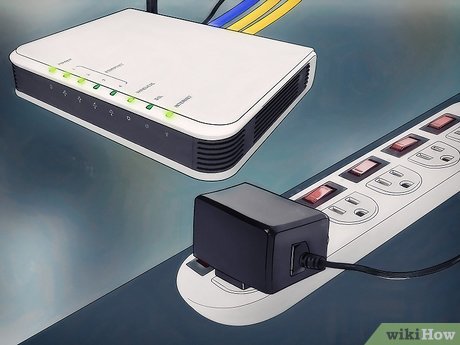


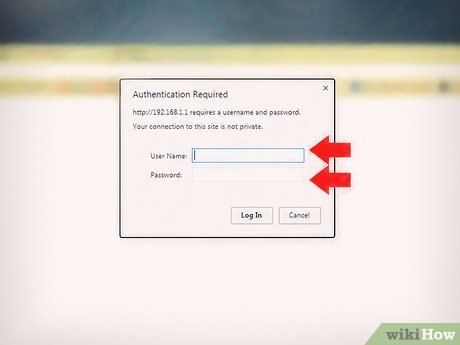


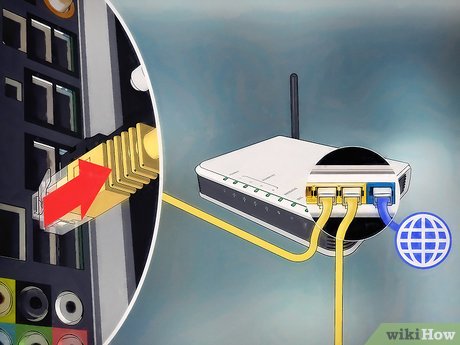
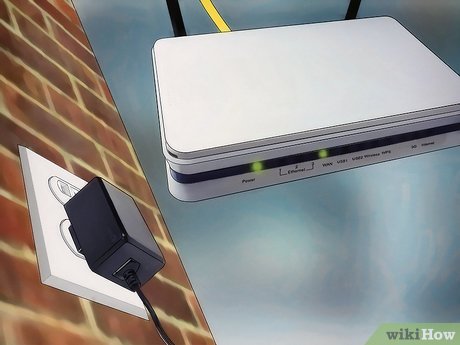

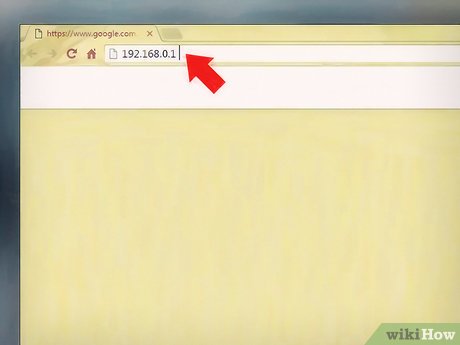
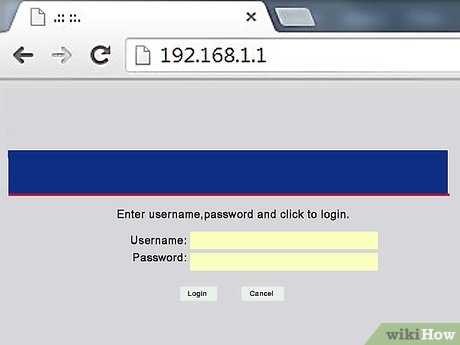
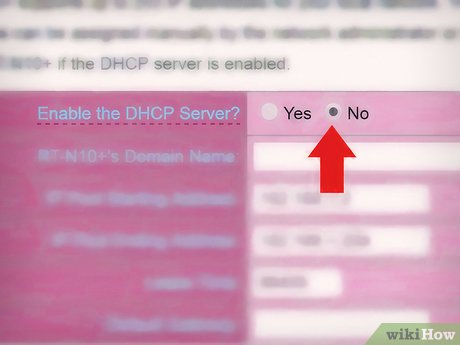



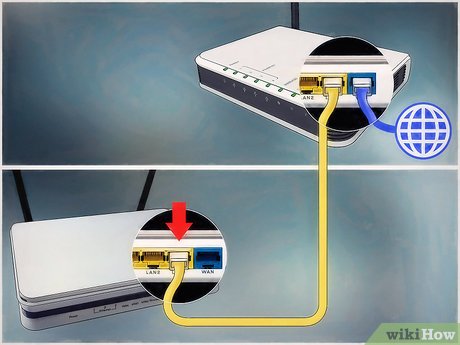













 How to Write a Sewing Blog
How to Write a Sewing Blog How to Blog Respectfully About Your Disabled Child
How to Blog Respectfully About Your Disabled Child How to Follow Blogs on iPhone or iPad
How to Follow Blogs on iPhone or iPad How to Create a Bilingual Blog
How to Create a Bilingual Blog How to Cite Blogs
How to Cite Blogs How to Cite a Blog in APA
How to Cite a Blog in APA